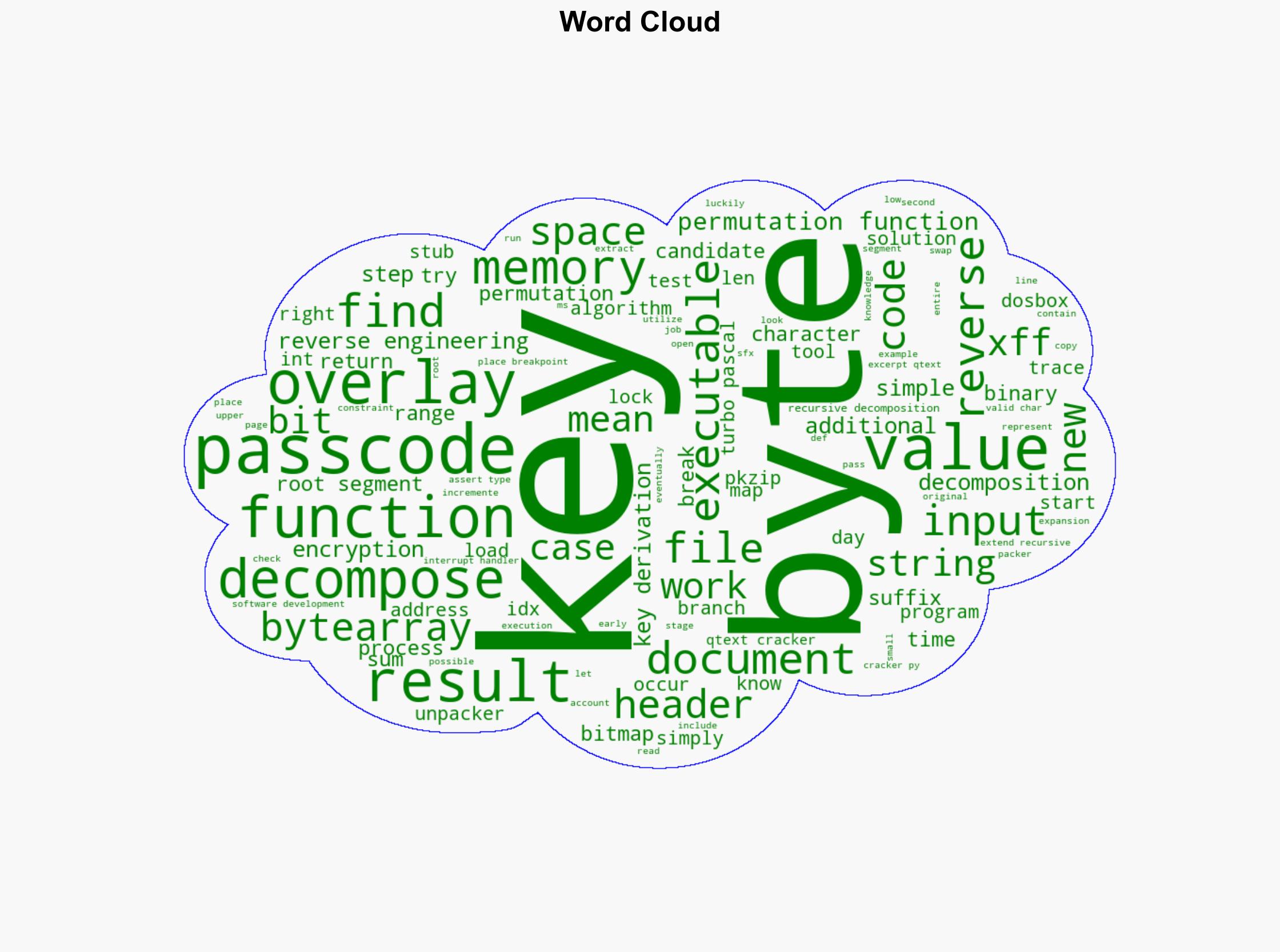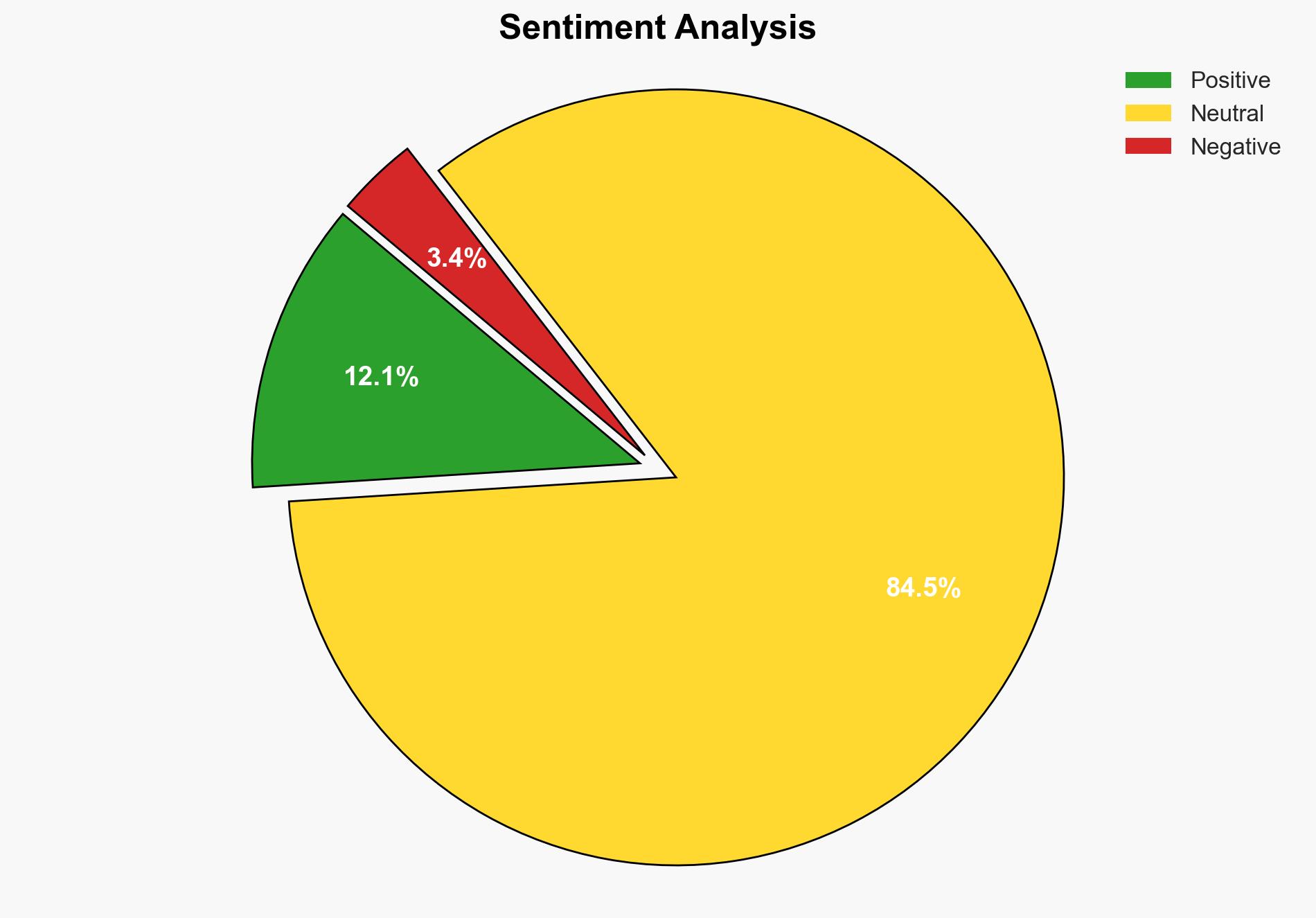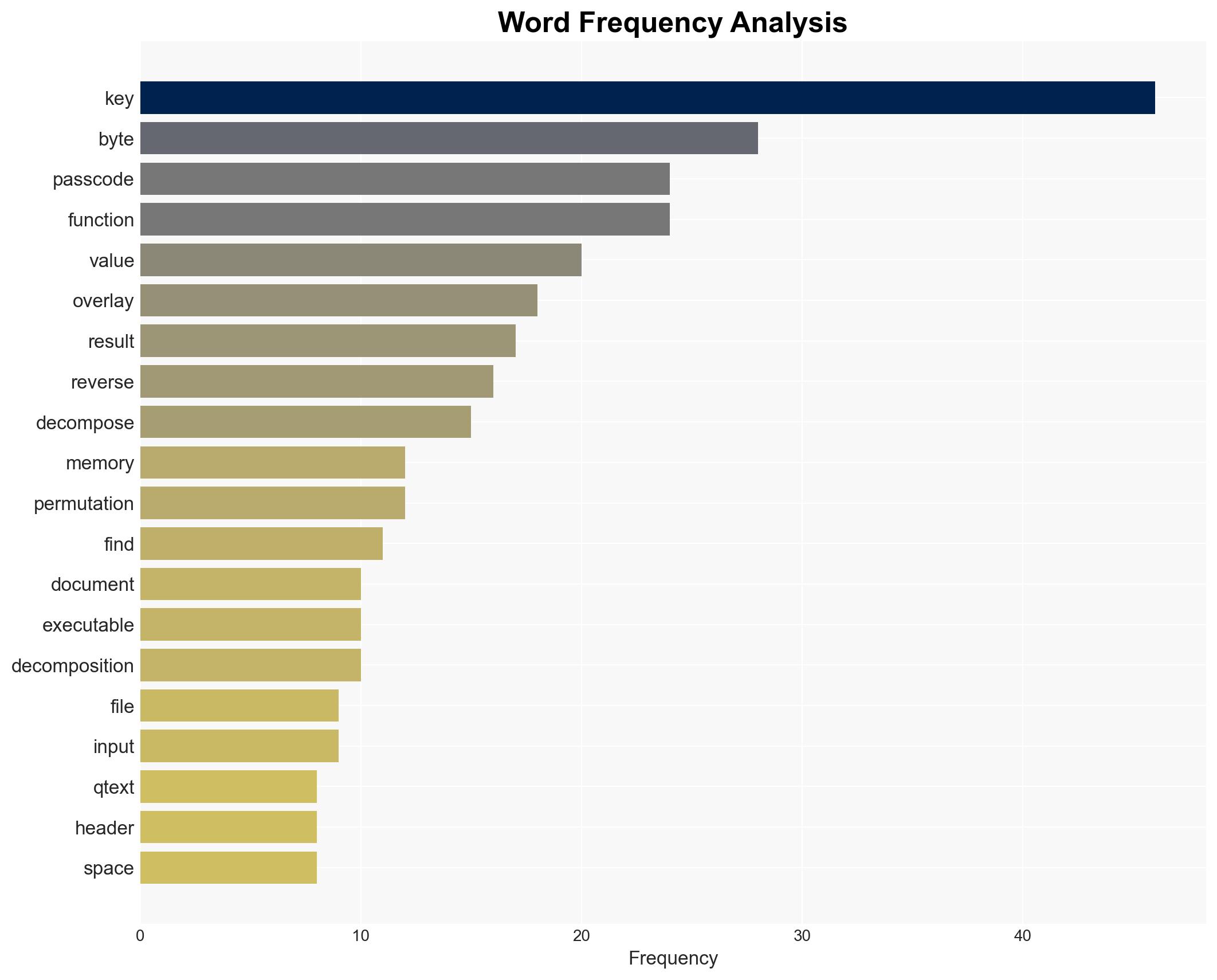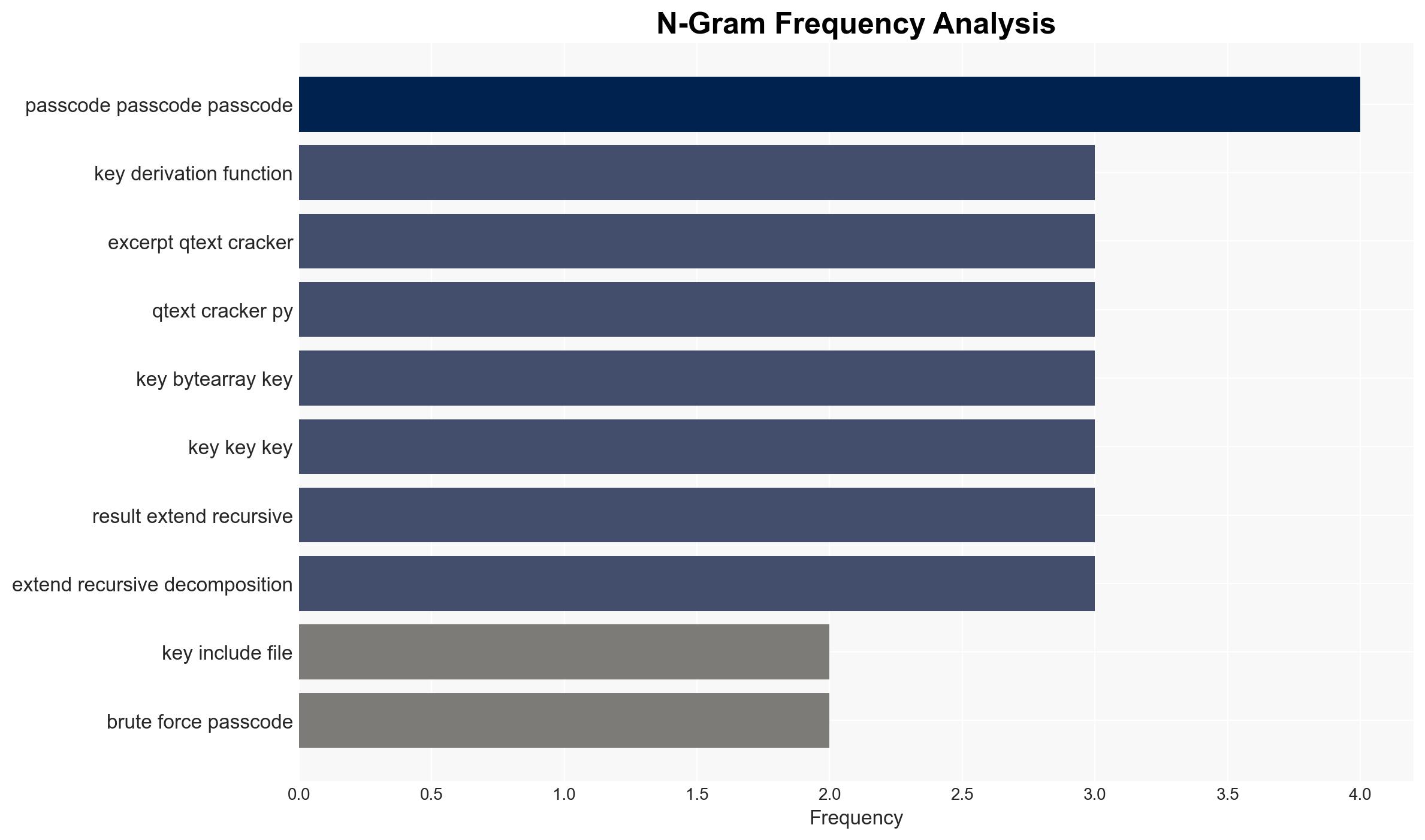Decoding the 90s Cryptography in Early Software Development 2023 – Botanica.software
Published on: 2025-04-07
Intelligence Report: Decoding the 90s Cryptography in Early Software Development 2023 – Botanica.software
1. BLUF (Bottom Line Up Front)
The analysis of early cryptography in software development, specifically through the reverse engineering of the qtext document encryption, reveals significant insights into past cryptographic practices. The study highlights the simplicity and vulnerabilities of early encryption methods, which relied on short passcodes and limited keyspaces. This historical understanding is crucial for preserving knowledge of early software development practices and can inform current cybersecurity strategies.
2. Detailed Analysis
The following structured analytic techniques have been applied for this analysis:
General Analysis
The reverse engineering of the qtext document encryption involved analyzing the binary code using tools like DOSBox and IDA Free. The encryption mechanism was rudimentary, with a short passcode and a small keyspace, making it vulnerable to brute-force attacks. The analysis also uncovered the use of Turbo Pascal and PKZIP compression, common in the era, which adds context to the software development environment of the time.
3. Implications and Strategic Risks
The study underscores the evolution of cryptographic practices and the potential risks associated with outdated encryption methods. The simplicity of early encryption poses a risk to any legacy systems still in use today, potentially compromising sensitive information. Additionally, the historical analysis provides a framework for understanding the development of more robust cryptographic standards, which is vital for national security and protecting economic interests.
4. Recommendations and Outlook
Recommendations:
- Encourage the review and update of legacy systems to ensure they meet current cryptographic standards.
- Promote educational initiatives to preserve knowledge of historical cryptographic practices for future reference.
- Support the development of tools and methodologies for analyzing and understanding legacy software systems.
Outlook:
In the best-case scenario, increased awareness and understanding of past cryptographic practices will lead to enhanced security measures and the preservation of historical knowledge. In the worst-case scenario, failure to address vulnerabilities in legacy systems could result in data breaches and compromised security. The most likely outcome is a gradual improvement in cybersecurity practices informed by historical insights.
5. Key Individuals and Entities
The report mentions Elisha and ssokolow as significant contributors to the analysis and understanding of early cryptographic practices in software development.




